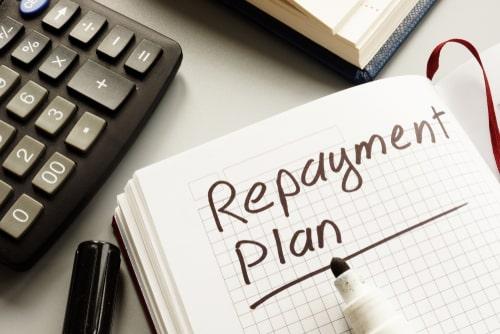How Is a Repayment Plan Created in a Chapter 13 Bankruptcy?
Bankruptcy is a powerful tool to help individuals and families who are struggling with overwhelming debt. There are multiple types of bankruptcy available, although Chapter 7 and Chapter 13 are the most common forms of debt relief used by consumers. Unlike Chapter 7, which involves liquidating assets to pay off creditors, Chapter 13 allows filers to keep their property while paying off some of their debts over three to five years. Chapter 13 involves a repayment plan, meaning that a debtor will make monthly payments to a bankruptcy trustee, who will then distribute the money to their creditors.
By understanding how a repayment plan is created, debtors can be sure they will be prepared to file for bankruptcy and receive relief from their debts. This process will involve the following steps:
1. Filing for Chapter 13 Bankruptcy
Before a repayment plan can be created, the filer must first qualify and file a petition for Chapter 13 bankruptcy. They will need to meet certain eligibility criteria, such as having a regular source of income and not having debts exceeding certain amounts (currently, the debt limit for Chapter 13 bankruptcy is $2,750,000). The filer must also complete credit counseling prior to filing for bankruptcy, and if they created a debt management plan during credit counseling, it must be filed along with their bankruptcy petition.
2. Calculating Disposable Income
A repayment plan will be based on the disposable income a person has available. Disposable income refers to the income a person earns from all sources minus necessary expenses, such as rent, utilities, and food. The difference between these two amounts will determine how much will be paid toward the plan each month.
3. Creating a Repayment Plan
After disposable income is reported to the court, the bankruptcy trustee will develop a repayment plan based on the debtor’s income and debt obligations. If a debtor’s income is below the median income in their state, their repayment plan will last for three years. Otherwise, the plan will last for five years. The trustee will ensure that the plan is feasible and fair for both the debtor and their creditors.
4. Confirmation Hearing
A confirmation hearing will be scheduled after the trustee approves the plan. During this hearing, the court will review the plan to ensure that it meets all requirements under the U.S. Bankruptcy Code. Creditors may also have the opportunity to object to the plan during the hearing. If the plan is approved, the filer will begin making payments according to the terms outlined in the plan.
5. Payment Distribution
After the repayment plan is approved by the court, the debtor will make payments to the trustee, who will then distribute the money to creditors according to the plan’s terms. Payments must be made on time, and if there are any missed or late payments, the bankruptcy could be dismissed by the judge. Interest and penalties may also apply to late payments, meaning that a debtor could end up paying more than they originally owed.
6. Modifying the Plan
During the payment plan, circumstances may arise in which a debtor may be unable to make payments. If a person loses their job, or if their income goes down for other reasons, they may need to adjust the payment amount, and they may request that the repayment plan be modified to address changed circumstances. Modifications to a Chapter 13 repayment plan must be approved by the court.
7. Completion of the Repayment Plan
Once the debtor has completed all payments in their repayment plan, any remaining debts that are eligible for discharge will be discharged. The discharge means that creditors can no longer collect on those debts. However, some debts may not be discharged, such as domestic support obligations, taxes, or student loans.
Contact Our Hudson Valley Chapter 13 Bankruptcy Lawyer
Creating a repayment plan in a Chapter 13 bankruptcy is a complex process that usually requires the help of an experienced bankruptcy attorney. The process can be daunting, but it can ultimately provide a path to financial stability and a fresh financial start. To learn more about bankruptcy or other debt-relief options, contact the experienced Rockland County Chapter 13 bankruptcy attorney at 845-358-7100. Call our office at 845-358-7100 to arrange a free consultation.
Sources:
https://www.uscourts.gov/services-forms/bankruptcy/bankruptcy-basics/chapter-13-bankruptcy-basics
https://www.uscourts.gov/sites/default/files/form_b_122c-2.pdf



